De Quervain’s Tenosynovitis is an inflammatory condition causing pain and swelling on the thumb side of the wrist, often due to repetitive strain. Exercises play a crucial role in treatment, improving mobility and strengthening the affected tendons and muscles. Common symptoms include pain, swelling, and limited movement. Gentle stretches, such as thumb stretches and wrist extensions, are often recommended to alleviate discomfort and promote recovery.
Definition and Overview
De Quervain’s Tenosynovitis is a condition characterized by inflammation of the tendon sheath on the thumb side of the wrist. It affects the tendons responsible for thumb movement, causing pain and swelling. This condition often results from repetitive strain or overuse, leading to thickening of the tendon sheath and restricted movement. Commonly known as “Mommy Thumb,” it can significantly impact daily activities requiring wrist and thumb motion. The inflammation disrupts the smooth gliding of tendons within their sheaths, leading to discomfort and limited functionality. Proper diagnosis and treatment, including targeted exercises, are essential for recovery and restoring normal wrist and thumb function.
Importance of Exercises in Treatment
Exercises are crucial in the treatment of De Quervain’s Tenosynovitis, as they help restore mobility, strength, and function to the affected wrist and thumb. Gentle stretching and strengthening exercises can reduce inflammation, improve tendon gliding, and prevent further injury. They also enhance blood flow to the area, promoting healing. Exercises should be performed gradually and carefully to avoid exacerbating symptoms. A structured exercise program can alleviate pain, improve grip strength, and restore normal movement. Consistency is key, as regular practice helps prevent recurrence and supports long-term recovery. Combining exercises with rest and ergonomic adjustments ensures the best outcomes for managing the condition effectively.
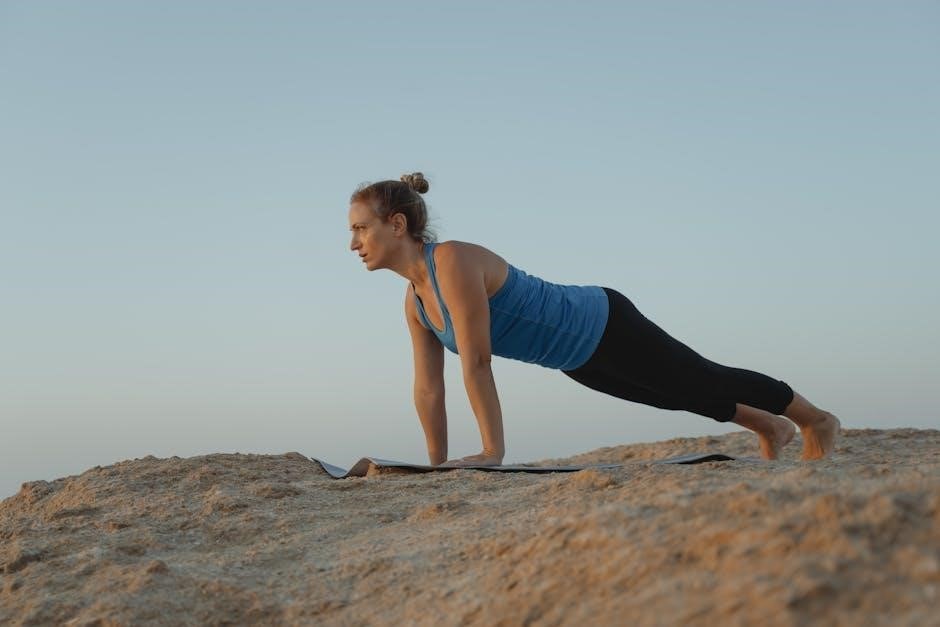
Causes and Risk Factors
De Quervain’s Tenosynovitis arises from repetitive wrist and thumb movements, inflammatory responses, and tendon irritation. Risk factors include overuse, occupational hazards, and anatomical predispositions, worsening symptoms over time.
Repetitive Strain Injuries
Repetitive strain injuries are a primary cause of De Quervain’s Tenosynovitis, often resulting from repetitive thumb and wrist movements. Activities like typing, gaming, or repetitive gripping can lead to chronic inflammation of the tendons. Overuse exacerbates the condition, causing pain and swelling in the affected area. Chronic inflammation weakens the tendons, making them more susceptible to irritation. Acute triggers include sudden increases in activity intensity or prolonged repetitive motions without adequate rest. These injuries highlight the importance of proper technique and regular breaks to prevent tendon strain. Addressing repetitive strain early is crucial to avoid progression and facilitate recovery.
Occupational Risk Factors
Certain occupations significantly increase the risk of developing De Quervain’s Tenosynovitis due to repetitive or forceful thumb and wrist movements. Jobs requiring frequent gripping, twisting, or lifting, such as manufacturing, construction, or healthcare, are common contributors. Professionals like dentists, surgeons, and musicians are also at higher risk due to repetitive hand use. Prolonged use of vibrational tools or heavy equipment can exacerbate tendon strain. Employers and workers must prioritize ergonomic adjustments and regular breaks to reduce strain. Without preventive measures, chronic inflammation can develop, leading to pain and limited mobility in the affected tendons, impairing work efficiency and overall quality of life.

Symptoms and Diagnosis
Symptoms include wrist pain, swelling, and limited thumb movement. Diagnosis involves physical exams, like Finkelstein’s test, and imaging to confirm tendon inflammation and rule out conditions.
Common Symptoms
Common symptoms of De Quervain’s Tenosynovitis include pain on the thumb side of the wrist, swelling, and tenderness. Patients often experience limited thumb and wrist movement, making gripping or twisting motions difficult. A “catching” or “snapping” sensation may occur when moving the thumb. Pain can worsen with activities like lifting, gripping, or twisting the wrist. In some cases, the wrist may feel stiff, and daily activities like opening jars or holding objects become challenging. These symptoms can develop gradually or appear suddenly, often exacerbated by repetitive hand or wrist movements.
Physical Tests for Diagnosis
Physical tests are crucial for diagnosing De Quervain’s Tenosynovitis. The Finkelstein test is commonly used, where the thumb is tucked into the palm, and the wrist is gently tilted toward the little finger. Pain on the thumb side of the wrist during this movement is a key indicator. Tenderness and swelling in the affected area are also assessed. A positive Eichhoff test, involving resistance to thumb extension, may confirm the condition. These tests help differentiate De Quervain’s from other wrist disorders, ensuring an accurate diagnosis and appropriate treatment plan.
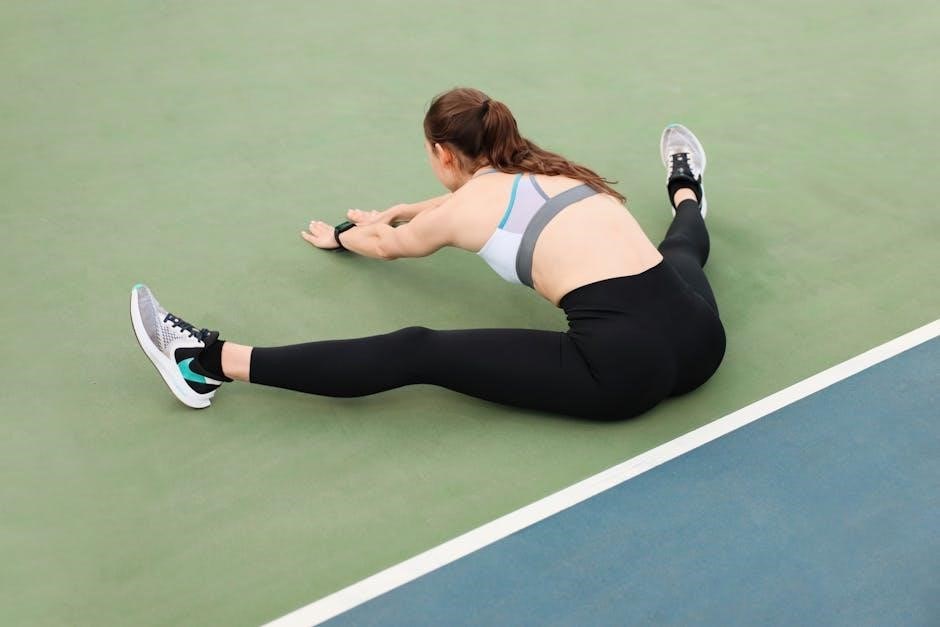
Treatment Options
Treatment options for De Quervain’s Tenosynovitis include rest, splinting, physical therapy, anti-inflammatory medications, and corticosteroid injections. Surgery may be necessary in severe cases.
Conservative Management
Conservative management is the first line of treatment for De Quervain’s Tenosynovitis, focusing on reducing inflammation and restoring wrist and thumb function. This approach often includes rest, immobilization with splints or braces, and ice therapy to alleviate symptoms. Gentle stretching and strengthening exercises, as outlined in the De Quervain’s Tenosynovitis exercises PDF, are integral to this method. Anti-inflammatory medications, such as NSAIDs, may be prescribed to reduce swelling. In some cases, corticosteroid injections are used to target inflammation directly. The goal is to avoid surgery by addressing the condition early and promoting healing through non-invasive methods. A structured exercise program, combined with activity modification, is often sufficient to manage symptoms effectively.
Role of Splints and Braces
Splints and braces play a crucial role in managing De Quervain’s Tenosynovitis by immobilizing the thumb and wrist, reducing strain on the inflamed tendons. These devices help alleviate pain and inflammation while allowing the tendons to heal. A thumb spica splint is commonly recommended, as it restricts thumb movement and provides stability. Braces can also be worn during activities to prevent overuse. While splints and braces do not cure the condition, they are often used in conjunction with the exercises outlined in the De Quervain’s Tenosynovitis exercises PDF to promote recovery. Proper use of these devices can significantly reduce symptoms and improve functional ability during the healing process.
Physical Therapy
Physical therapy is a cornerstone in the management of De Quervain’s Tenosynovitis, focusing on restoring mobility and strength to the wrist and thumb. A physical therapist can design a personalized program tailored to the patient’s needs, incorporating exercises from the De Quervain’s Tenosynovitis exercises PDF. Techniques such as gentle stretching, joint mobilization, and soft tissue massage are often employed to reduce stiffness and pain. Strengthening exercises for the forearm and wrist muscles are also emphasized to improve functionality. Modalities like heat or ice therapy may be used to enhance healing. Consistency in performing these exercises is crucial to avoid recurrence and restore full range of motion. Physical therapy not only aids in recovery but also prevents future flare-ups by addressing underlying biomechanical issues.
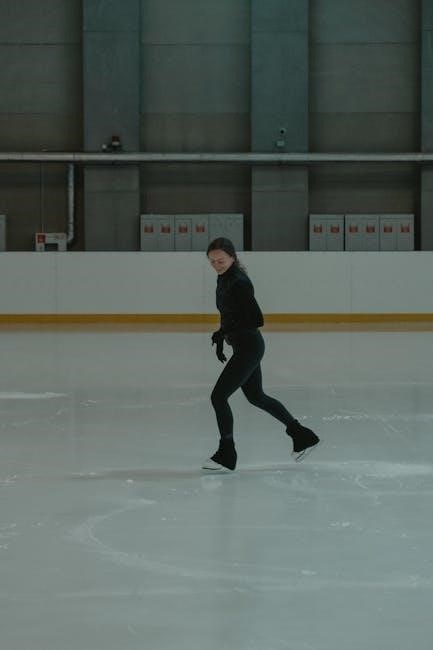
Exercises for De Quervain’s Tenosynovitis
Common exercises include thumb stretches, wrist extensions, and radial deviation strengthening. Gentle grip strengthening and opposition stretches are also effective. Regular practice aids recovery and prevents recurrence.
Thumb Stretches
Thumb stretches are essential for alleviating tension in the thumb and wrist, particularly for individuals with De Quervain’s Tenosynovitis. To perform a thumb stretch, gently extend the thumb away from the palm and hold for 20-30 seconds. Repeat this exercise 3-5 times daily. Another effective stretch involves placing the hand flat on a surface with the wrist straight, then lifting the thumb upward as far as possible without causing pain. Regular thumb stretching helps improve flexibility, reduce inflammation, and restore normal thumb function. Consistency is key to preventing recurrence and promoting recovery. Always perform stretches gently to avoid exacerbating the condition.
Wrist Extensions
Wrist extensions are a cornerstone exercise for managing De Quervain’s Tenosynovitis, targeting the extensor muscles of the forearm. To perform wrist extensions, rest your forearm on a flat surface with your palm facing down. Slowly lift your wrist, keeping your fingers straight, and hold for 5-10 seconds before lowering it back. Use light weights or resistance bands to increase intensity as strength improves. Perform 3 sets of 10-15 repetitions daily. This exercise strengthens the muscles and tendons, reducing strain on the affected area. Consistency is vital to restore wrist function and alleviate symptoms. Avoid overexertion to prevent further inflammation.
Radial Deviation Strengthening
Radial deviation strengthening exercises target the muscles involved in wrist movement, particularly the extensor pollicis brevis and abductor pollicis longus, which are often affected in De Quervain’s Tenosynovitis. To perform this exercise, hold a light weight or resistance band in your hand with your palm facing down. Slowly tilt your wrist outward, away from your body, and hold for 5 seconds before returning to the starting position. Aim for 3 sets of 10-12 repetitions daily. This exercise improves wrist mobility and strength, reducing strain on the tendons. It also enhances grip strength, making daily activities easier. Consistency is key to alleviate symptoms and restore function.
Grip Strengthening
Grip strengthening exercises are essential for improving hand and wrist function in individuals with De Quervain’s Tenosynovitis. These exercises target the intrinsic muscles of the hand and forearm, enhancing grip strength without straining the affected tendons. One effective method is to use a stress ball or small rubber ball. Slowly squeeze the ball for 5-10 seconds, then release. Repeat for 10-15 repetitions. Another option is to grip a light weight or resistance band, holding for 5-10 seconds before releasing. Start with lower resistance and gradually increase as strength improves. Perform 3 sets daily to promote muscle endurance and reduce discomfort during daily activities. Consistency is vital for long-term relief and functional recovery.
Opposition Stretch
The opposition stretch is a simple yet effective exercise for De Quervain’s Tenosynovitis, targeting the thumb and wrist tendons. To perform this stretch, sit or stand with your arm at shoulder height and palm facing away. Use your other hand to gently pull your thumb away from your palm, bringing it toward your little finger. Hold this position for 20-30 seconds, ensuring a gentle stretch without pain. Repeat 3-4 times. This exercise helps reduce tendon irritation and improves thumb mobility. Perform it 3-4 times daily to enhance flexibility and alleviate symptoms. Consistency is key to achieving long-term relief and restoring normal hand function.
Isometric Exercises
Isometric exercises strengthen wrist and thumb muscles without joint movement, aiding tendon stability and pain reduction. Perform 10-15 repetitions, holding each position for 10 seconds daily.
Wrist Flexion
Wrist flexion is an essential isometric exercise targeting the flexor muscles. Sit or stand with your arm straight, palm up. Slowly tilt your wrist downward, holding for 5 seconds, then release. Perform 10-15 repetitions, 3 sets daily. This strengthens the flexor tendons, improving wrist stability and reducing strain on the affected area. It’s ideal for early stages of recovery, as it avoids excessive movement while promoting strength and flexibility. Consistency is key to alleviating symptoms and preventing recurrence. Wrist flexion is a simple yet effective exercise that can be done anywhere, making it a cornerstone of home-based rehabilitation programs for De Quervain’s Tenosynovitis.
Wrist Extension
Wrist extension is a fundamental isometric exercise for De Quervain’s Tenosynovitis, targeting the extensor muscles. Sit or stand with your arm straight, palm down. Slowly tilt your wrist upward, holding for 5 seconds, then release. Perform 10-15 repetitions, 3 sets daily. This strengthens the extensor tendons, enhancing wrist mobility and reducing inflammation. It’s particularly beneficial for improving grip strength and reducing strain on the thumb side of the wrist. Consistency in this exercise helps restore normal wrist function and prevents further irritation. Wrist extension is a cornerstone of rehabilitation, often combined with other exercises for comprehensive recovery. Regular practice promotes long-term relief and functional improvement.
Finger Spring Exercises
Finger spring exercises are essential for improving grip strength and thumb mobility in De Quervain’s Tenosynovitis. Sit with your hand flat, palm down, and fingers extended. Slowly curl your fingers into a fist, then gently open them wide, spreading your fingers apart. Repeat for 10-12 repetitions, 3 sets daily. This exercise strengthens the flexor muscles and enhances thumb opposition, reducing strain on the tendons. It also improves dexterity and reduces stiffness. Consistent practice helps restore normal hand function and alleviates pain. Finger spring exercises are a simple yet effective way to support recovery and maintain wrist and hand mobility. Regular performance is key to long-term improvement.

Advanced Exercises
Advanced exercises for De Quervain’s Tenosynovitis focus on resistance and dynamic movements to strengthen wrist and thumb muscles, improving tendon strength and flexibility for full recovery.
Resistance Band Exercises
Resistance band exercises are effective for strengthening the thumb and wrist muscles, enhancing tendon stability. Begin by attaching the band to a stable object or holding it in the unaffected hand. Perform wrist and thumb extensions against the resistance, focusing on controlled movements. Aim for 3 sets of 10-15 repetitions. Gradually increase resistance as strength improves. These exercises target the extensor pollicis brevis and abductor pollicis longus tendons, key in De Quervain’s recovery. Ensure proper form to avoid aggravating the condition. Modify resistance levels based on comfort and progress slowly to prevent overstrain. Incorporate variations, such as diagonal movements, for comprehensive strengthening.
Eccentric Wrist Exercises
Eccentric wrist exercises focus on the lengthening phase of muscle contractions, enhancing tendon strength and resilience. For De Quervain’s, slowly lower the wrist into flexion or extension using the unaffected arm, then return to the starting position. Repeat for 3 sets of 10-15 repetitions. These exercises target the extensor tendons, improving their ability to handle repetitive strain. Perform with minimal discomfort, gradually increasing resistance as symptoms improve. Eccentric exercises are particularly effective for tendon healing and reducing pain. Ensure proper form to avoid overloading the tendons. Incorporate these exercises 2-3 times daily to promote recovery and restore functional movement.
Weight-Bearing Exercises
Weight-bearing exercises strengthen the wrist and forearm muscles, improving joint stability and reducing strain on the tendons. Start with a wrist plank: place your forearm on the ground, lift your wrist slowly, and hold for 5-10 seconds. Repeat 8-10 times. Modify push-ups on a soft surface to avoid direct pressure. Perform wrist extensions while holding light weights or using resistance bands. These exercises enhance bone density and muscle endurance, promoting recovery. Begin with 2-3 sets of 8-12 repetitions, gradually increasing as strength improves. Proper form is crucial to avoid overloading the tendons. Incorporate these exercises 2-3 times weekly to support long-term recovery and functional strength.
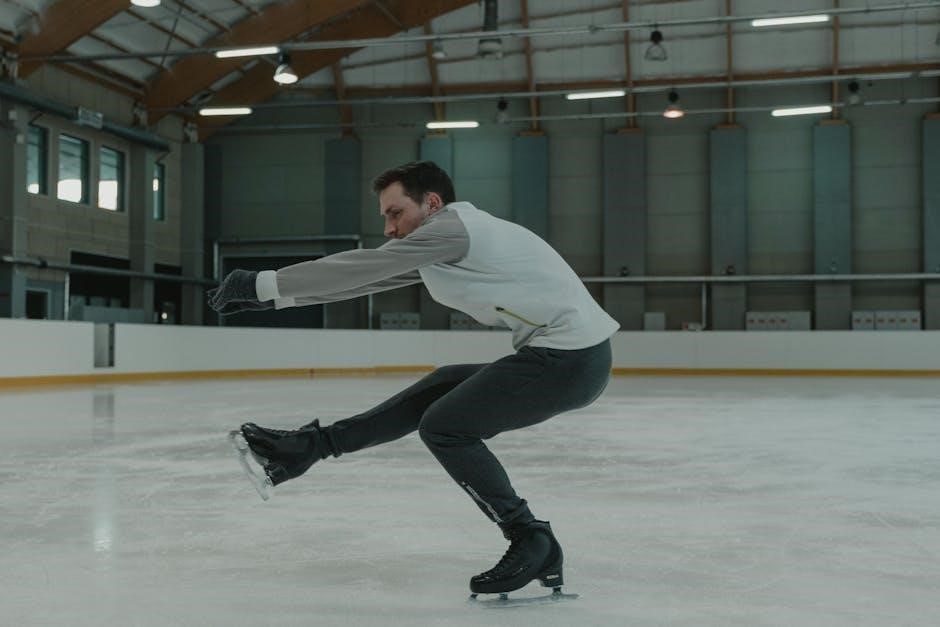
Home Exercise Program
A home exercise program for De Quervain’s focuses on gentle stretches, strengthening, and repetitive motion exercises. Perform exercises daily, preferably in the morning and evening.
Start with 5-10 repetitions of each exercise, gradually increasing as comfort allows. Continue for several months to ensure full recovery and prevent recurrence. Consistency is key.
Creating a Daily Routine
Establishing a consistent daily routine is essential for managing De Quervain’s Tenosynovitis. Begin with gentle stretches and progress to strengthening exercises. Start with 5-10 minutes daily, focusing on proper technique.
- Warm up with light wrist and thumb movements before exercises.
- Incorporate stretches like thumb extensions and radial deviations to improve mobility.
- Include strengthening exercises, such as grip strengthening with resistance bands.
- Track progress in a journal to monitor improvement and identify patterns.
- End with cool-down stretches to prevent stiffness.
Consistency is key to reducing symptoms and promoting long-term recovery. Adjust the routine as symptoms improve, ensuring exercises remain challenging but comfortable.
Progressing the Exercises
Progressing exercises for De Quervain’s Tenosynovitis requires careful monitoring of symptoms and gradual intensity increases. Once pain subsides, resistance or duration can be added. For example, wrist extensions can advance from light weights to resistance bands. Thumb stretches can incorporate gentle resistance using rubber bands. Strengthening exercises, like grip strengthening, can progress to heavier objects or longer hold times. Introduce more complex movements, such as combined wrist and thumb actions, as strength improves. Always prioritize proper technique to avoid re-injury. Consult a healthcare provider to tailor progression to individual recovery stages. Consistent, gradual advancement ensures optimal healing and functional improvement. Aim to progress every 7-10 days as tolerated.
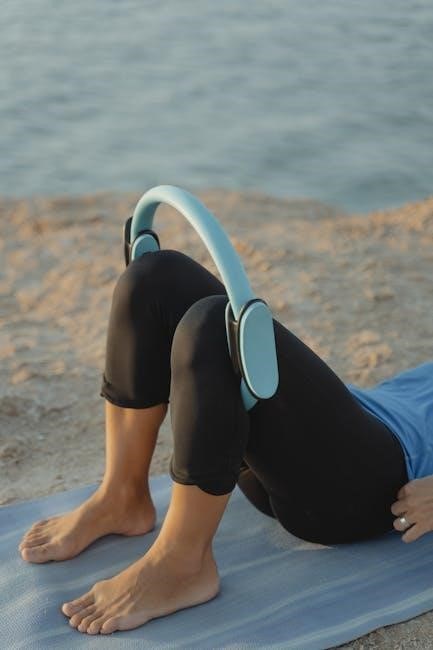
Prevention and Recovery
Preventing De Quervain’s involves ergonomic adjustments and avoiding repetitive strain. Recovery focuses on rest, ice therapy, and gradual resumption of activities to promote healing and strength.
Activities to Avoid
To manage De Quervain’s, avoid repetitive thumb and wrist motions, such as excessive gripping, twisting, or lifting. Minimize activities like heavy texting, using a computer mouse, or repetitive lifting, which strain the tendons. Avoid sports or hobbies involving repetitive wrist movements, like golf or racquet sports, until symptoms improve. Heavy gripping or vibrating tools should also be avoided. Taking regular breaks and modifying tasks to reduce strain can help prevent flare-ups. By limiting these activities, individuals can reduce inflammation and promote tendon healing, making exercises more effective and supporting overall recovery.
Proper Ergonomics
Practicing proper ergonomics is essential to prevent De Quervain’s Tenosynovitis flare-ups. Ensure your workspace is set up to minimize repetitive strain, with tools and devices positioned to avoid awkward wrist angles. Use ergonomic handles on tools to reduce grip force and keep wrists in a neutral position during tasks. Avoid bending or twisting wrists excessively, especially during repetitive activities. Regularly adjust your posture and take breaks to stretch and move. Proper ergonomics helps reduce tendon stress, promoting healing and preventing further inflammation. By maintaining good hand and wrist alignment, individuals can effectively manage symptoms and support recovery while performing daily or work-related tasks.
Ice Therapy
Ice therapy is a simple yet effective method to manage De Quervain’s Tenosynovitis symptoms. Applying ice to the affected area reduces inflammation and alleviates pain. Wrap an ice pack or a bag of frozen peas in a cloth to avoid direct skin contact. Apply for 10–15 minutes, 2–3 times daily, especially after activity. Ice helps numb the area, decreasing discomfort and swelling. It’s particularly useful during acute flare-ups or after exercises. Consistent use of ice therapy, combined with rest and proper exercises, can significantly aid in recovery. Always prioritize ice therapy as part of your daily routine to soothe the tendons and promote healing.

When to Seek Medical Help
Seek medical help if symptoms persist, worsen, or severe pain limits daily activities. Consult a specialist for proper diagnosis and treatment to prevent tendon damage.
Red Flags for Severe Symptoms
Certain symptoms indicate the need for immediate medical attention. Severe pain that disrupts daily activities, significant swelling, or limited thumb/wrist movement are red flags. Numbness or tingling in the thumb or forearm may signal nerve involvement. If pain persists despite rest or worsens over time, consult a healthcare professional. Difficulty gripping objects or performing routine tasks should also prompt medical evaluation. Ignoring these signs can lead to chronic conditions or require more invasive treatments. Seek help if symptoms fail to improve with self-care measures or exercises, as professional guidance is essential for proper recovery and preventing long-term damage.
Importance of Professional Guidance
Professional guidance is crucial for effectively managing De Quervain’s Tenosynovitis. A healthcare provider or physical therapist can tailor exercises to individual needs, ensuring proper technique and progression. They can also monitor recovery and adjust treatments based on progress. Professional oversight helps prevent overexertion or improper form, which might worsen symptoms. Additionally, experts can address underlying factors, such as ergonomic issues or repetitive strain, to promote long-term healing. Without guidance, patients may overlook critical aspects of recovery, leading to prolonged discomfort or incomplete resolution. Professional advice ensures a safe and effective approach to managing the condition and achieving optimal outcomes.
De Quervain’s Tenosynovitis exercises are essential for recovery. Consistent practice, combined with professional guidance, ensures effective healing and prevents recurrence. Stay committed for optimal results.
De Quervain’s Tenosynovitis exercises are crucial for managing symptoms and promoting recovery. A combination of thumb stretches, wrist extensions, and strengthening exercises can alleviate pain and improve mobility. Consistency is key, as irregular practice may slow progress. Rest, proper ergonomics, and avoiding repetitive strain are equally important to prevent recurrence. Professional guidance ensures exercises are performed safely and effectively. Over time, these practices can restore normal function to the wrist and thumb, allowing individuals to return to daily activities without discomfort. Regular exercise routines, paired with patience, are essential for long-term relief from De Quervain’s Tenosynovitis.
Encouragement for Consistent Practice
Consistent practice of De Quervain’s exercises is vital for symptom relief and recovery. While progress may seem gradual, sticking to the routine can significantly reduce pain and improve function. Many patients find motivation in noticing small improvements over time. Setting realistic goals and tracking progress can enhance adherence. Additionally, celebrating milestones, no matter how small, helps maintain commitment. Seeking support from physical therapists or online communities can also boost motivation. Remember, patience and persistence are key to overcoming De Quervain’s Tenosynovitis. With dedication, individuals can regain full wrist and thumb mobility, reducing the need for invasive treatments like surgery. Stay committed and proactive in your recovery journey.
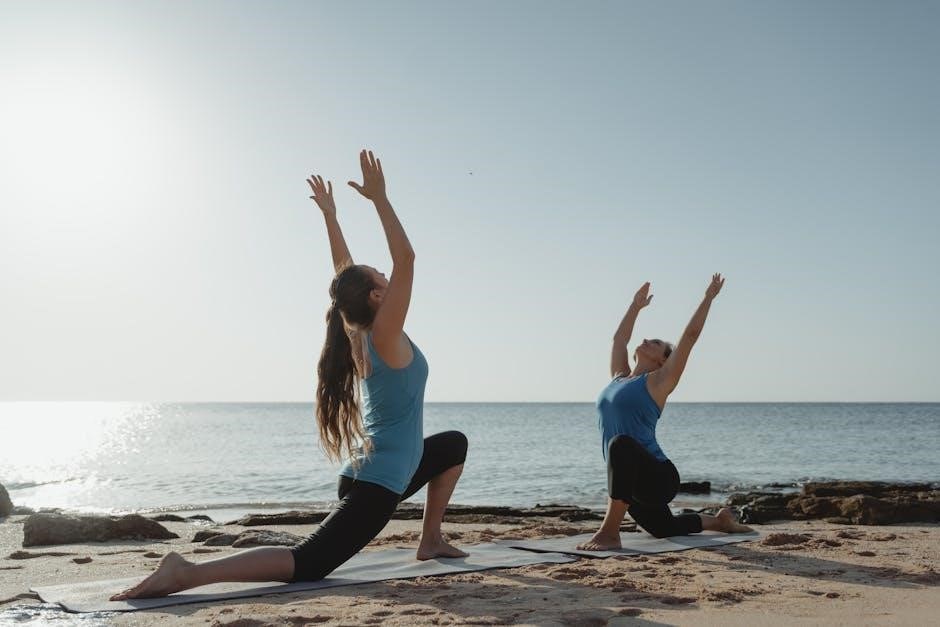
Additional Resources
Recommended PDF guides offer detailed exercise routines and recovery tips. Online forums provide support and shared experiences, enhancing your understanding and management of De Quervain’s Tenosynovitis.
Recommended PDF Guides
Various PDF guides are available online, offering comprehensive exercise routines for De Quervain’s Tenosynovitis. These guides often include detailed illustrations, step-by-step instructions, and progress tracking sheets. Many are authored by physical therapists or orthopedic specialists, ensuring evidence-based content. Popular sources include medical websites, orthopedic clinics, and online health repositories. Some guides focus on home-based rehabilitation, while others incorporate advanced techniques for long-term recovery. When downloading, ensure the PDF is from a reputable source and updated with the latest research. These resources are invaluable for creating a structured and effective exercise plan tailored to your specific needs and recovery goals.
Online Communities and Forums
Online communities and forums provide valuable support for individuals managing De Quervain’s Tenosynovitis. Platforms like Facebook groups, Reddit forums, and specialized health communities offer spaces to share experiences, ask questions, and learn from others. Many members discuss effective exercises, recovery tips, and personal success stories. These forums often include recommendations for PDF guides and resources; Engaging with these communities can provide emotional support and practical advice, helping individuals stay motivated during their recovery journey. Additionally, some forums are moderated by healthcare professionals, ensuring the information shared is reliable and evidence-based. Participating in these online spaces can complement traditional treatment plans and foster a sense of connection among those dealing with similar challenges.
